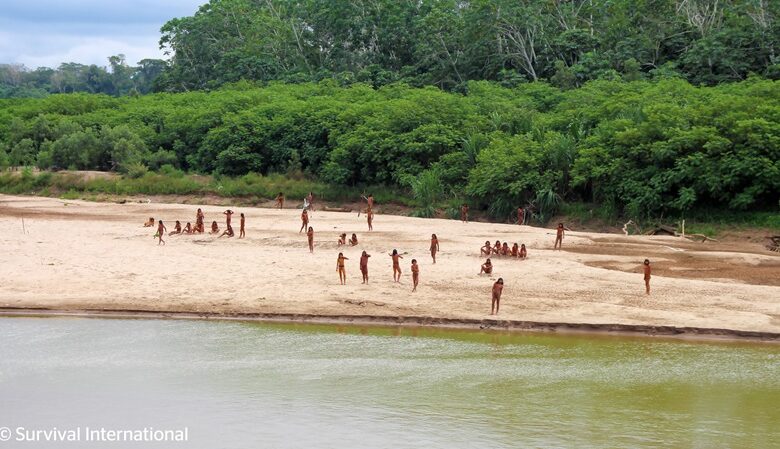Rare Photos Capture World’s Largest Uncontacted Mashco Piro Tribe Amid Growing Concerns Over Logging Threats

News Mania Desk/Agnibeena Ghosh/19th July 2024
In a significant development, rare photographs have emerged depicting the Mashco Piro, a previously uncontacted indigenous tribe residing deep within the Peruvian Amazon. Released by Survival International on July 16, these images offer a glimpse into the lives of this elusive group as they emerge from their isolated territory. The photos, taken in late June near a river in Madre de Dios, reveal tribe members relaxing by the riverbank, providing a rare and intimate look at their daily lives.
The sighting of the Mashco Piro is particularly poignant given the escalating concerns about their well-being. According to FENAMAD, a local Indigenous rights organization, increased logging activity in their region is likely driving the tribe from their traditional lands. The Mashco Piro appear to be moving closer to settlements, possibly in search of food and safer refuge.
Survival International’s director, Caroline Pearce, highlighted the urgency of the situation, noting that the images show a large number of isolated Mashco Piro living just a few kilometers from where logging operations are about to commence. The proximity of these operations poses a direct threat to their habitat and way of life.
Recent reports indicate that over 50 Mashco Piro individuals have been sighted near the Yine village of Monte Salvado, and another group of 17 was observed near the village of Puerto Nuevo. This increased visibility suggests that the tribe is being forced to seek resources and shelter closer to human settlements due to the encroachment of logging activities.
The Mashco Piro traditionally inhabit an area between two natural reserves in Madre de Dios. They are known for their reclusive nature and minimal contact with outsiders, including the nearby Yine people. Their territory is home to several logging companies, with Canales Tahuamanu being a prominent player. This company has constructed over 200 kilometers of roads to facilitate timber extraction, including valuable species like cedar and mahogany.
Despite requests for comments, Canales Tahuamanu’s representative in Lima has yet to respond. The company is certified by the Forest Stewardship Council, which has authorized its operations within 53,000 hectares of forests in Madre de Dios.
The Peruvian government reported on June 28 that local residents had observed Mashco Piro individuals on the Las Piedras River, about 150 kilometers from Puerto Maldonado, the capital of Madre de Dios. Additionally, sightings of the tribe have been reported across the border in Brazil. According to Rosa Padilha from the Brazilian Catholic bishops’ Indigenous Missionary Council in Acre, the Mashco Piro often flee from loggers and are frequently seen on beaches during this time of year, foraging for Amazon turtles and leaving behind evidence of their presence, such as turtle shells.
Padilha described the Mashco Piro as a people in distress, constantly on the move due to the threats posed by external encroachments. The photographs and reports underscore the urgent need for protective measures to safeguard the Mashco Piro and their environment from the expanding reach of logging operations and other external pressures.






